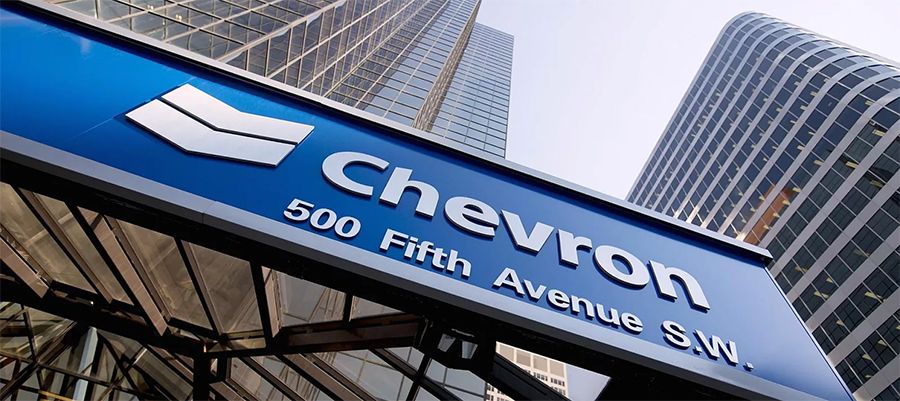
Source: PaxForex Premium Analytics Portal, Fundamental Insight
Berkshire Hathaway, the investment company led by Warren Buffett, has a reputation for investing in leading companies and holding positions for extended periods. While many of their top picks are traditional and conservative businesses, they have also recently found value in other areas. One of their most notable investments is in Apple, which constitutes an enormous 46.5% of their public equity holdings. Another significant story has been Berkshire's acquisition of oil and gas companies.
Over the course of a few years, Chevron, a major integrated oil and gas company, became Berkshire's third-largest public equity holding behind Apple and Bank of America by the end of 2022. However, Berkshire sold some of their Chevron shares in the fourth quarter of 2022 and made an announcement at their annual meeting that they reduced their Chevron stake by 20.8% in the first quarter of 2023, dropping Chevron to the fifth-largest holding by the end of March 2023. Additionally, Chevron's stock price declined by 9.1% in Q1 2023, causing Berkshire's overall Chevron position to decrease from approximately $30 billion at the end of Q4 2022 to $21.6 billion at the end of Q1 2023.
Given these developments, it is worth considering whether it is time to follow Berkshire's lead and sell Chevron stock or if it still presents a good investment opportunity.
Warren Buffett's investment moves through Berkshire Hathaway are often watched closely, given his legendary status as an investor. However, blindly copying Berkshire's stock picks may not always be the best strategy, as the company's investment decisions may be influenced by factors other than the perceived value of a company.
For example, Berkshire may increase or decrease its position in stock due to excess operating income that needs to be invested. This strategy is similar to how the company buys back its own stock, using extra cash to put capital to work. While a depressed Berkshire stock price may warrant additional stock repurchases, the company habitually channels extra profits from its core businesses into other investments. Therefore, it is important to analyze Berkshire's investment moves carefully before making investment decisions.
Berkshire Hathaway's decision to reduce its position in Chevron may not necessarily reflect a lack of confidence in the company's investment thesis. Berkshire's investment decisions can be influenced by various factors beyond their assessment of a company's long-term prospects. For instance, Berkshire may choose to add to its position in a stock if it generates a high amount of operating income in a given period, which could enable them to put capital to work. Alternatively, it may sell or trim a position for reasons that don't reflect the investment thesis, such as if the position becomes abnormally large. In the case of Chevron, Berkshire's position reduction may be reasonable as it was an uncharacteristically large position that paid off quickly. Berkshire may have decided to reduce the position to a more reasonable size. In 2020, Berkshire acquired 48.499 million Chevron shares, representing 2.5% ownership at a cost basis of $40.24 billion, but subsequently reduced the position by 20.8% in Q1 2023, bringing the overall Chevron position to $21.6 billion.
To summarize, Berkshire Hathaway sold a significant portion of its Chevron stock in the first quarter of 2023, reducing its market value from $30 billion to $21.6 billion. However, the sale should be considered in the context of when Berkshire initially purchased the stock and its current position sizing relative to other holdings. Berkshire aggressively bought Chevron stock in 2020, and it quickly paid off, leading to an abnormally large position that may have prompted the reduction to a more reasonable size. Despite the reduction, Berkshire is still heavily invested in Chevron, and the sale may have been motivated by reasons unrelated to its confidence in the business.
Berkshire Hathaway has a significant investment in the oil and gas industry, with Chevron being one of its largest positions. Despite Berkshire's recent reduction in its Chevron stake, it remains heavily invested in the sector through BHE, Occidental Petroleum, and other holdings. Chevron, in particular, is considered an attractive investment due to its low valuation, consistent dividend increases, and strong free cash flow that supports stock buybacks.
It's not uncommon for investors, including Berkshire, to rebalance their portfolio by selling or trimming a position to avoid overconcentration in a single stock. If an investor's Chevron position has become too large relative to other holdings due to a significant capital gain, selling some shares and reallocating the proceeds to other stocks may make sense. However, for investors looking to start a position in Chevron or add to an existing one, the stock remains an appealing investment that offers both value and income.
As long as the price is above 155.00, follow the recommendations below:
- Time frame: D1
- Recommendation: long position
- Entry point: 156.44
- Take Profit 1: 162.00
- Take Profit 2: 167.00
Alternative scenario:
If the level of 155.00 is broken-out, follow the recommendations below:
- Time frame: D1
- Recommendation: short position
- Entry point: 155.00
- Take Profit 1: 150.00
- Take Profit 2: 145.00













